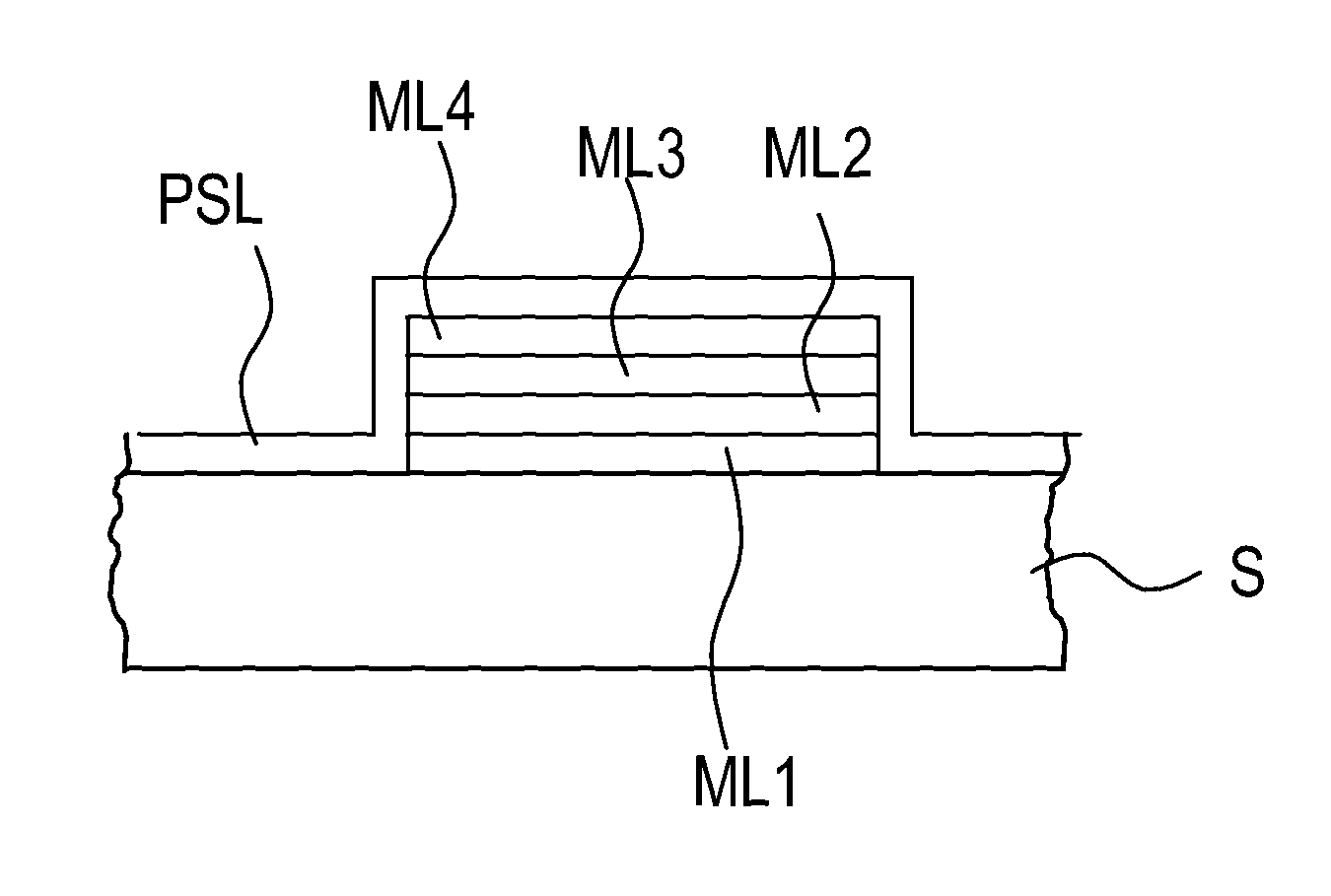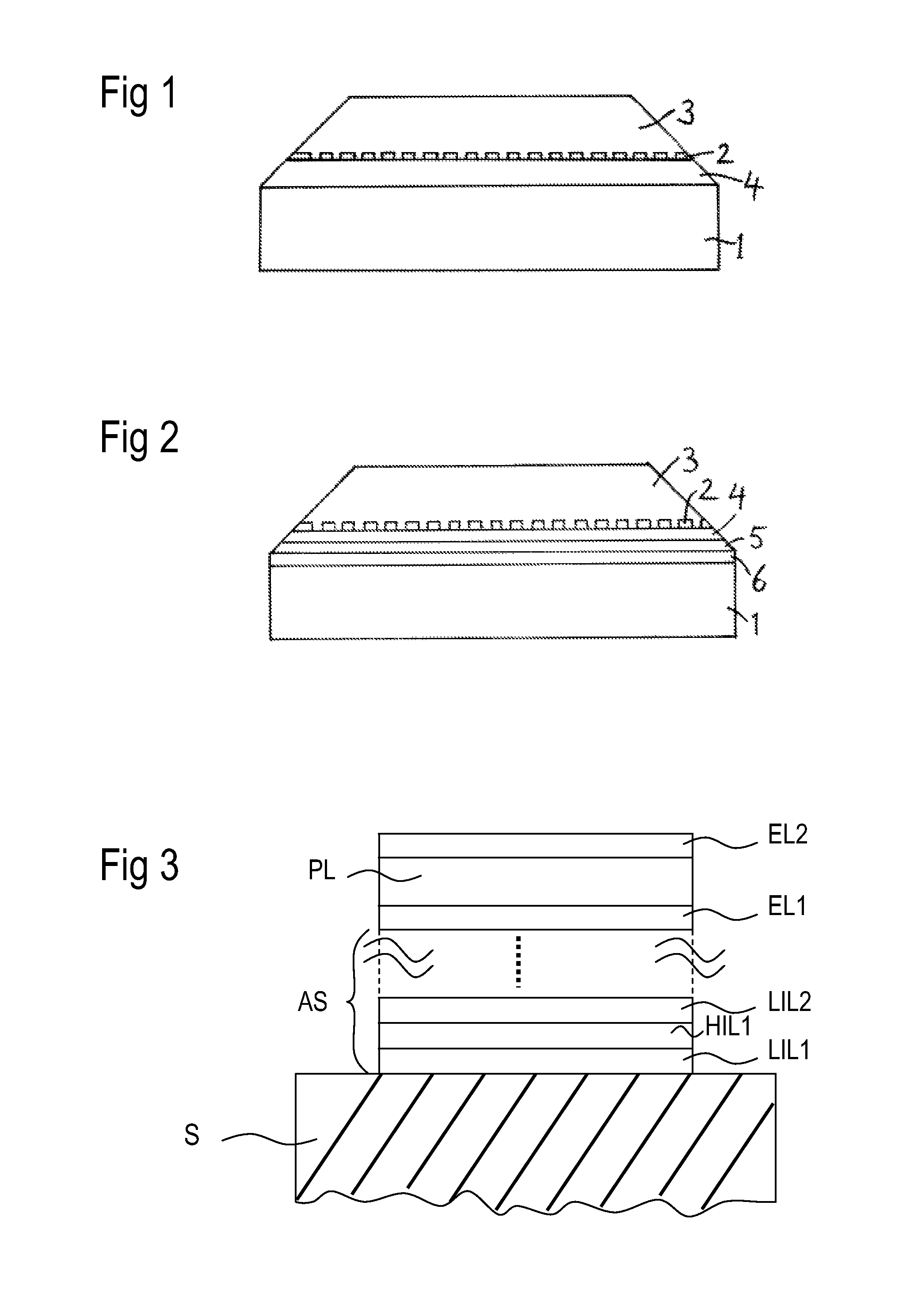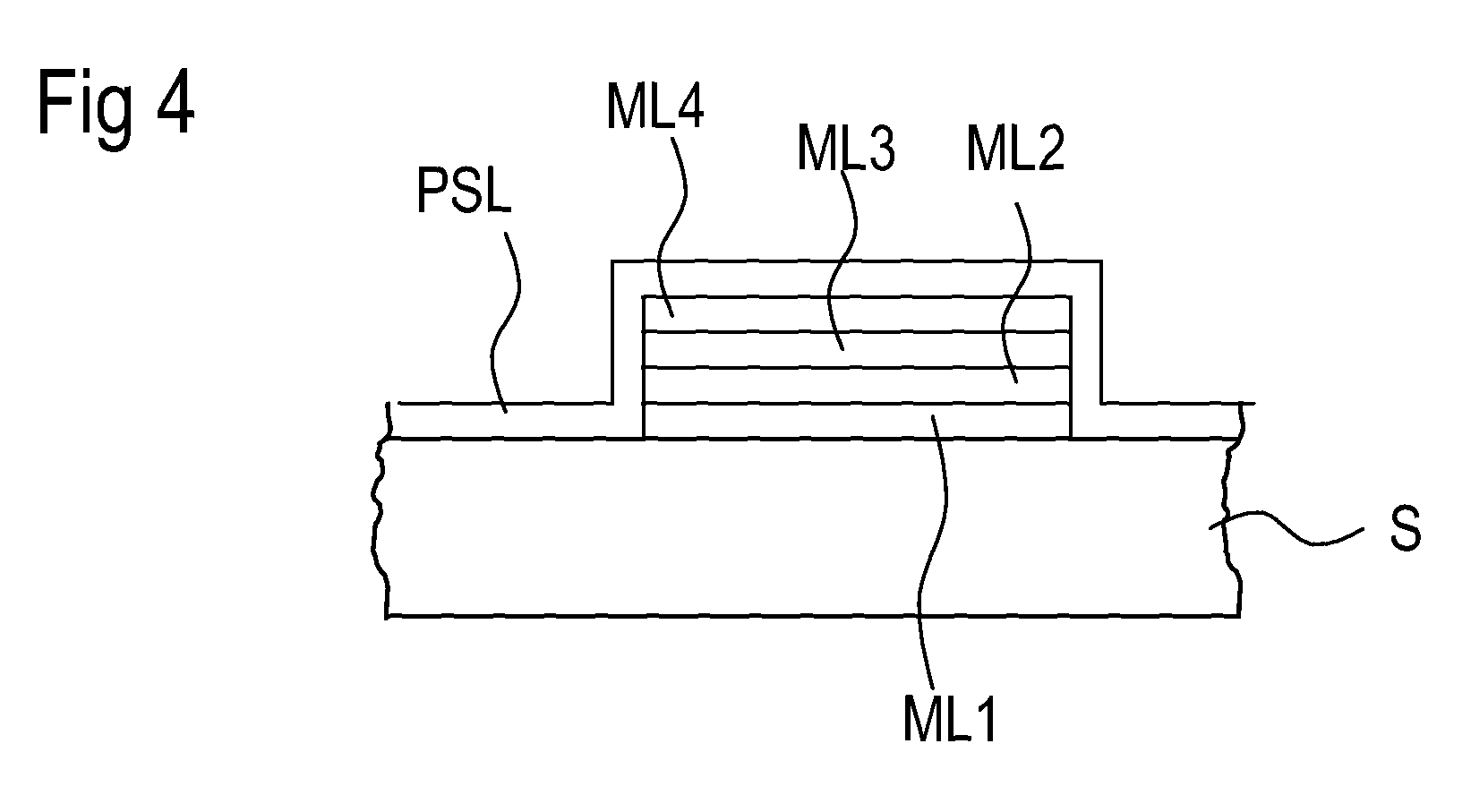Method of producing a microacoustic component
a microacoustic component and microacoustic technology, applied in the direction of coatings, chemical vapor deposition coatings, special surfaces, etc., can solve the problems of uneconomical, process takes a long time, and the deposition rate is generally so low, and achieve the effect of excessive layer thickness fluctuations
- Summary
- Abstract
- Description
- Claims
- Application Information
AI Technical Summary
Benefits of technology
Problems solved by technology
Method used
Image
Examples
Embodiment Construction
[0046]FIG. 1 shows a schematic cross section through a microacoustic component. A substrate 1 has a layer 4 composed of dielectric or piezoelectric material. The layer 4 can also encompass the entire substrate 1, for example, if the material of the substrate 1 is LiNbO3. A metallic strip structure 2 is arranged on the layer 4, which metallic strip structure can be provided, in particular, for electrodes of the component. The metallic strip structure 2 can be, for example, a plurality of metal strips which are oriented parallel to one another and which are successively alternately connected to a respective connection conductor and in this way form two electrodes intermeshed with one another in a comb-like manner. By way of example, a surface wave component or surface wave filter can be formed with electrodes of this type. In the example illustrated in FIG. 1, the metallic strip structure 2 is covered on the top side with a covering layer 3, which can be a dielectric material, for exa...
PUM
| Property | Measurement | Unit |
|---|---|---|
| thickness | aaaaa | aaaaa |
| temperature | aaaaa | aaaaa |
| grain sizes | aaaaa | aaaaa |
Abstract
Description
Claims
Application Information
 Login to View More
Login to View More - R&D
- Intellectual Property
- Life Sciences
- Materials
- Tech Scout
- Unparalleled Data Quality
- Higher Quality Content
- 60% Fewer Hallucinations
Browse by: Latest US Patents, China's latest patents, Technical Efficacy Thesaurus, Application Domain, Technology Topic, Popular Technical Reports.
© 2025 PatSnap. All rights reserved.Legal|Privacy policy|Modern Slavery Act Transparency Statement|Sitemap|About US| Contact US: help@patsnap.com



